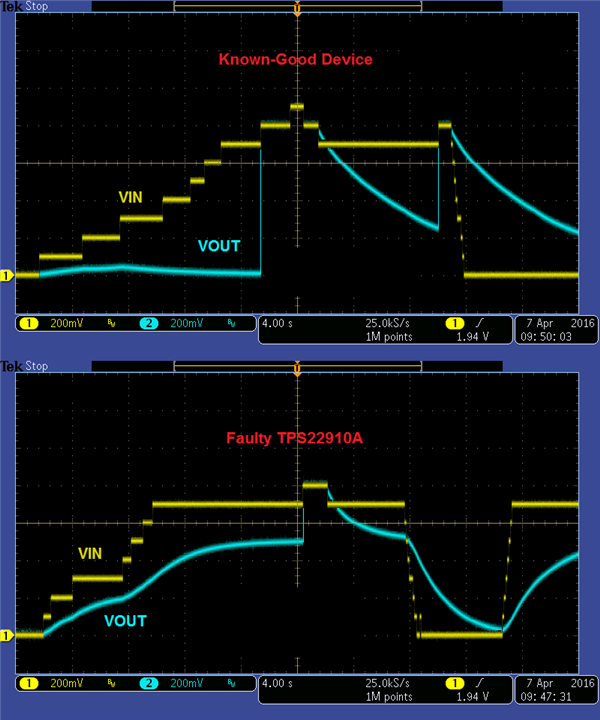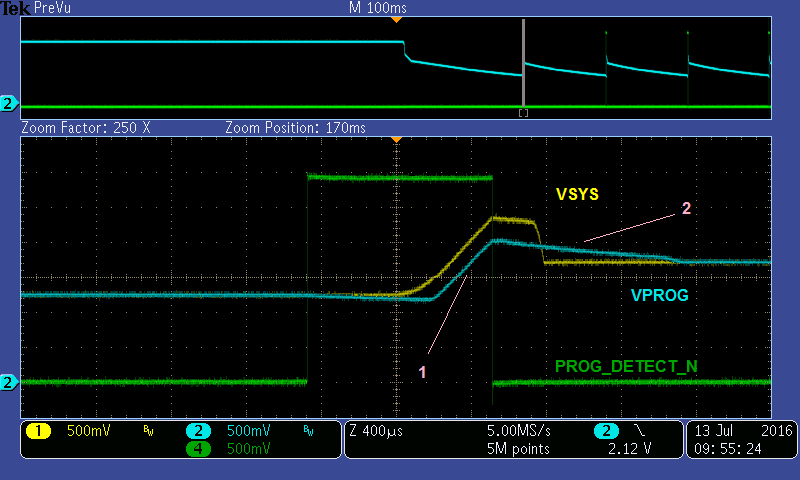We have a design that utilises the TPS22910A and are having some failures of the part during manufacturing.
In our design we are seeing two faults occur on a small number of devices during manufacture:
- When the TPS22910A is enabled, VOUT is approximately 1V lower than VIN despite no load (<100uA).
- When the TPS22910A is disabled with VIN pulled to GND via ~62k, if a voltage is applied to the output the input voltage spikes to >2V before settling down (over the course of a few 100ms). I believe it is also drawing excessive current from the output (~10mA).
The vast majority of components put through our prototype production have not experienced the issue but we have concern about any potential latent issues in our design due to this component.
Note we are also using the reverse current functionality at VIN=0V (as detailed in this issue)
Has this failure mode been experienced by others? Do you have any information on what sort of event or fault could cause a similar failure mode?
Thank you for your assistance!
Regards,
Adam





